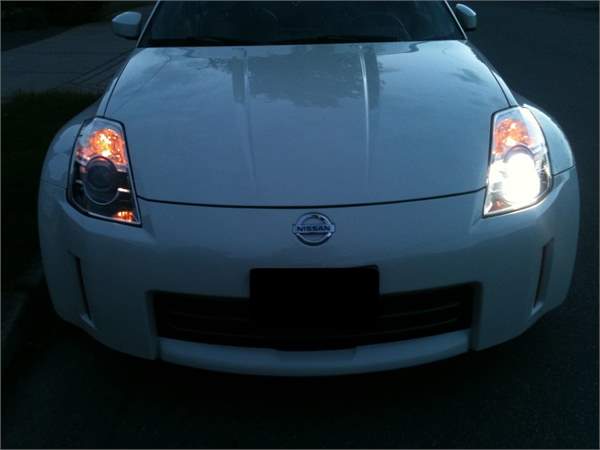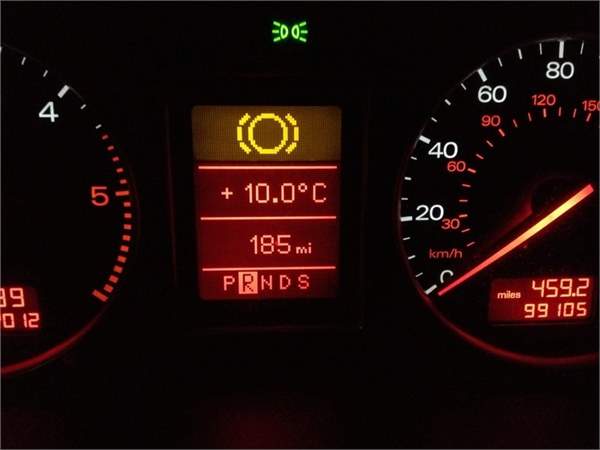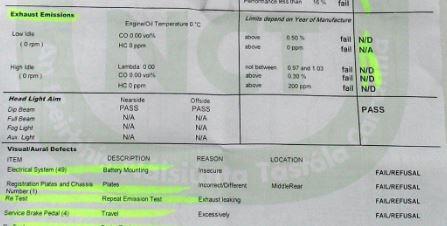The NCT/MOT, an annual or biennial stress inducing, stomach churning time that can cause the best of us to worry about the unknown of test day. From the wise words of Benjamin Franklin and an even wiser Roy Keane ”by failing to prepare, you are preparing to fail”. Each year a high percentage of failures in the UK and Ireland come from small DIY jobs simply not carried out before arriving on the day. Although some of these issues may get you away with a visual and quick retest, some may require you to fork out for a full retest, so putting in the time beforehand may save you in the long run. Here's our top tips to ensure the best odds to get through the NCT or MOT first time:
Oil & Coolant We will start off nice and simple. Make sure your car has adequate oil and coolant. Not only is it needed for the NCT/MOT but this should be part of regular scheduled maintenance on your vehicle. Engine oil, coolant, power steering brake fluid, windscreen wash and more should check periodically. You can buy all of them here Operating Temperature One thing that can be overlooked on the day. Ensure your vehicle is at a normal operating temperature prior to arriving at the test centre. After a short drive from home or work, you arrive with an hour to spare, read a book, flick through social media but if the car is not at the right temperature this can skew emission readings and more, and not in your favour so make sure to have a good jaunt before arriving. 
Bright Idea To Check Your Bulb's: Almost 20% of failures are due to lights. Although you yourself may not be able to check that your headlights are adjusted correctly (most pre-NCT tests offered will cover this), making sure they work in the first place is essential. A quick scan of the headlight and low beam, indicators, parking lights, number plate lights and brake lights. The rear fog lamp, where fitted, is also tested and also ensure and the reverse provides a white light which is clearly visible. You can buy all your bulbs here.
Adjust Your Headlight's: Also to note when it comes to lights, do you ever find yourself driving along and suddenly blinded by an oncoming drivers headlights? Headlight adjustment needs to be monitored and checked from time to time. In order to get the correct alignment, you may need specialist equipment to make sure you have the correct light coverage but most garages will be able to do this for you.
Empty The Boot: The tester will need to check your spare tyre compartment/battery if in the boot so always check that the boot is completely empty and your vehicle is clear of all valuables and personal belongings.
Cleaning Down Under From bushing to ball joints, the tester will be in and under your pride and joy so the vehicle is reasonably clean especially the underbody. This can be done at most petrol stations or wash centers.
Handbrake: Your handbrake should be able to hold the car on a hill and also check when pulling it upwards that is doesn’t click anymore than about 7-8 times. 
- Warning Lights If the car is sending you warning lights, it is going to send warning signals through the testers head. Get any warning lights and faults investigated and fixed, or if you have taken care of them yourself, make sure to clear the fault code.
- Tyre Tread Depth The rubber between you and the ground will be thoroughly inspected, so make sure all tyres are inflated to the correct pressure and in date. You can pick up a tyre pressure tester here and you can find the correct pressure in your owner’s manual. There also needs to be at least 1.6mm of tread and use a torch to ensure there are no cuts, lumps of bulges on the tyre tread and sidewall.
- Hubcaps/Wheel Trims Staying on the wheels, make sure your hubcaps are removed (only if the wheel nuts are not visible)
- Wiper Blades And Windscreen Possibly one of the most infuriating noises on a rainy day. The wiper blades should be working noise free and there is specific coverage map to go by to pass so always make sure to check you have the right model fitted beforehand. The windscreen should be free from large chips or cracks.
- Timing Belt You may be asked to sign a disclaimer at the test centre. This covers that the engine is in a fit state to be tested such as the cam belt/timing belt. If you are unsure whether the cambelt/timing belt is due a refresh, check your owner’s manual and stick to the recommended mileage/time changing interval.
- Buckle Up You may have folded the seats down to fit in that much needed IKEA wardrobe but in the meantime the seat belts may have slipped down behind the seats. Double check that all seat belts and clips including the rear are fully visible. This is just a small selection of what a tester will cover throughout the short time with your pride and joy, but as you may have noticed from the list above, all of these common faults and issues can be wiped out with regular general maintenance and servicing. From oil levels to lights, the NCT and MOT will cover the basic running of your vehicle but is in no way a one stop shop for maintenance. We have all heard of someone passing the NCT or MOT and days later being stranded on the side of the road with a breakdown so your own personal servicing schedule should coincide with your mileage and usage.
I Failed My NCT/MOT, What Happens Now?

You can put in the key hours beforehand but nothing is a guarantee and if you receive a dreaded fail sheet on the day don’t worry. In the case of the NCT, all re-tests must be booked within 21 days of the initial test. Re-tests which do not require the use of a test lane will be free of charge. Free re-tests will cover minor visual items, for example, replacement of windscreen wiper and registration plates. Re-tests must be completed within 30 days of the initial test or a full test will need to be repeated and charged accordingly, so don’t hang around once you leave the test centre disheartened or it will hit your pocket twice as hard. For the MOT, if you receive a " refusal of an MOT test certificate", you can take your vehicle away if your current MOT certificate is still valid. If your MOT has run out you can take your vehicle to have the failed defects fixed and pre-arrange an MOT test appointment. You only need a partial retest if you leave the vehicle at the test centre for repair and it’s retested within 10 working days. There’s no fee for this.